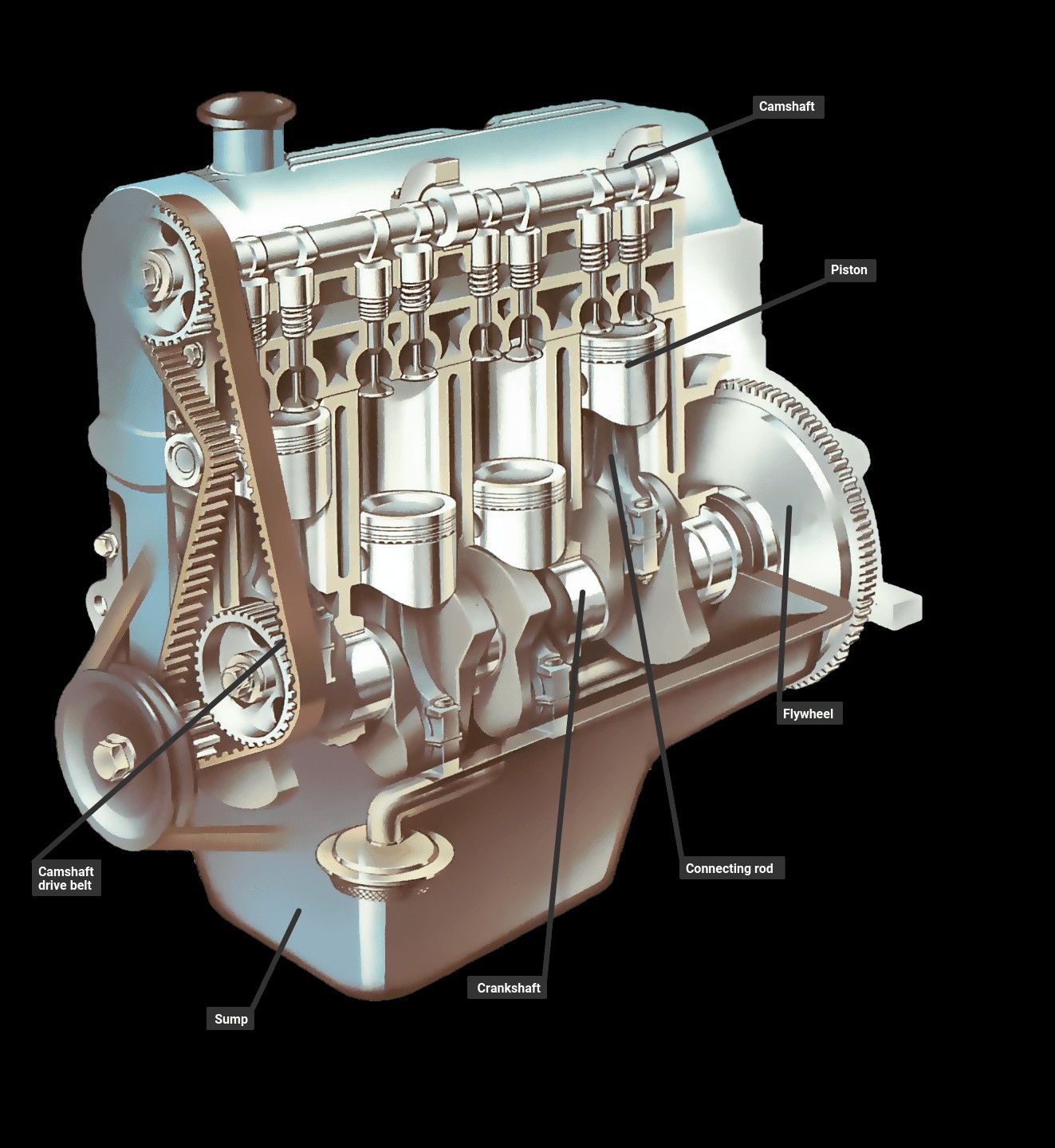The Car Engine is often referred to as the heart of any vehicle. It’s an intricate machine designed to convert the energy from burning fuel into the power that propels your car forward. This process begins with a spark igniting a mixture of fuel vapor and compressed air within a cylinder. This controlled explosion is what makes it an internal combustion engine. As the mixture combusts, it expands rapidly, generating the force needed to drive your car.
To handle the demanding task of powering a vehicle, a car engine is built to be incredibly robust. Its structure is fundamentally divided into two main sections: the cylinder block and the cylinder head. The cylinder block is the engine’s lower, heavier part, essentially the casing for all the main moving components. Above it sits the detachable cylinder head.
The cylinder head plays a crucial role in managing the flow of air and fuel into the engine and exhaust gases out. It houses valve-controlled passages that allow the air-fuel mixture to enter the cylinders for combustion, and separate passages for expelling the gases produced after burning.
Inside the cylinder block resides the crankshaft. This vital component is responsible for converting the up-and-down (reciprocating) motion of the pistons into the rotational motion needed to turn the wheels. Often, the cylinder block also houses the camshaft. The camshaft is responsible for operating the mechanisms that precisely open and close the valves in the cylinder head, controlling the intake of fuel and air and the exhaust of gases. In some engine designs, the camshaft is located in the cylinder head itself or positioned above it.
Exploring Different Car Engine Layouts
Car engines come in various configurations, each with its own set of characteristics and applications. Here are some common layouts you might encounter:
In-line Engine
The in-line engine, also known as a straight engine, is the simplest and most frequently used type. It features cylinders arranged in a single row, typically vertically. A common example is a four-cylinder in-line engine, where four cylinders are positioned close together in a line. For larger engine capacities, especially those exceeding 2,000cc, six-cylinder in-line engines are often used.
V-Engine
The V-engine offers a more compact design compared to in-line engines. In this configuration, cylinders are arranged in two banks, set at an angle to each other, forming a ‘V’ shape. This layout is particularly common in engines with a higher number of cylinders, such as V8 or V12 engines, and is also found in some six-cylinder engines where compactness is desired. The angle between the cylinder banks in a V-engine is typically up to 90 degrees.
Horizontally-Opposed Engine
Horizontally opposed engines, sometimes referred to as flat engines or boxer engines, are an extension of the V-engine concept. In this design, the angle between the cylinder banks is widened to 180 degrees, resulting in cylinders positioned directly opposite each other. The main advantages of this layout include a lower engine height, which can contribute to a lower center of gravity for the vehicle, and enhanced engine balance.
Within the cylinder block, beyond the cylinders themselves, are integrated mountings for essential components like the oil filter and fuel pump. The sump, which serves as the oil reservoir for engine lubrication, is bolted to the underside of the crankcase, completing the basic structure of the car engine.
